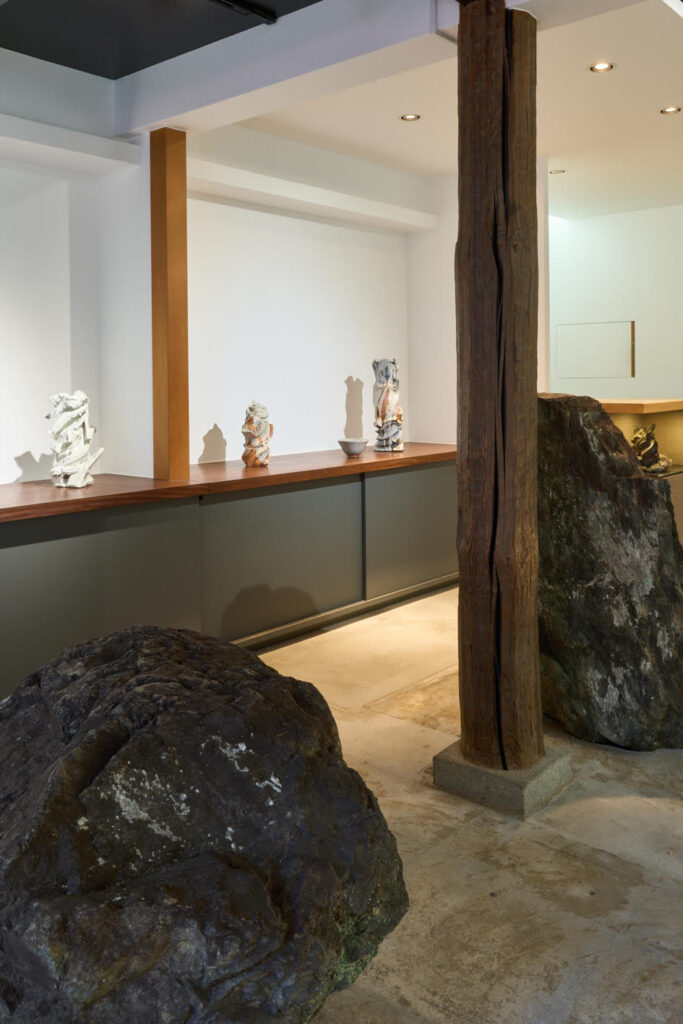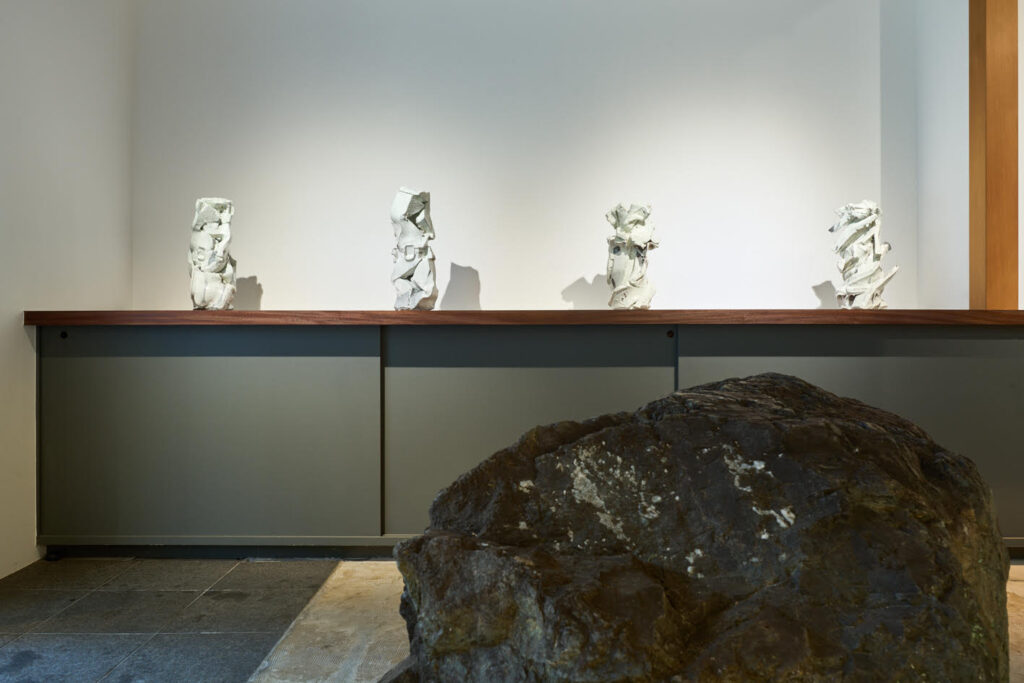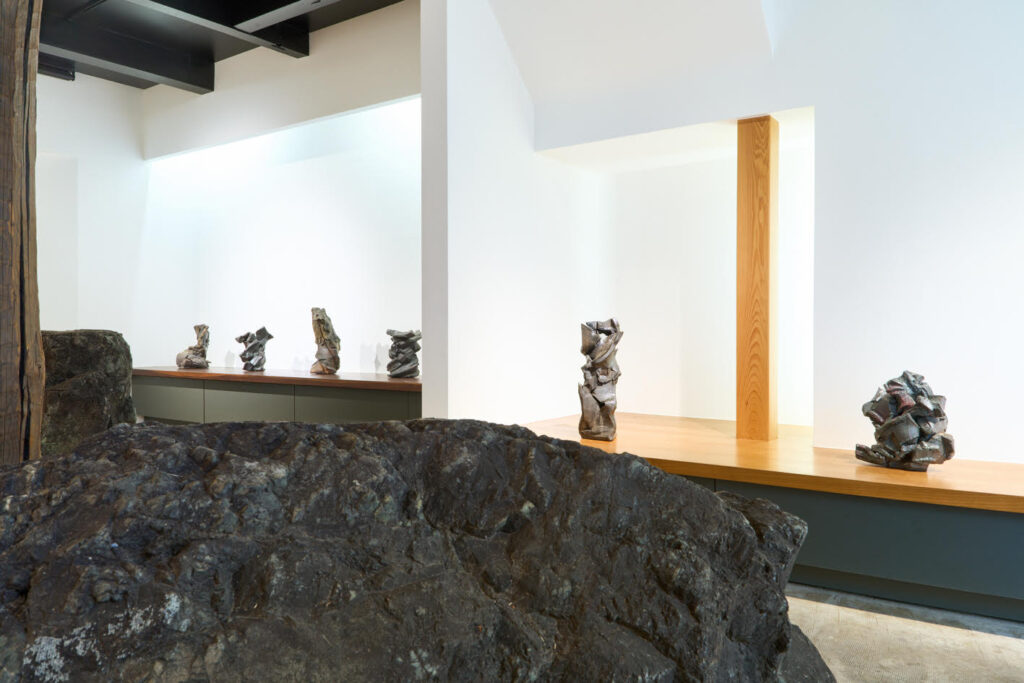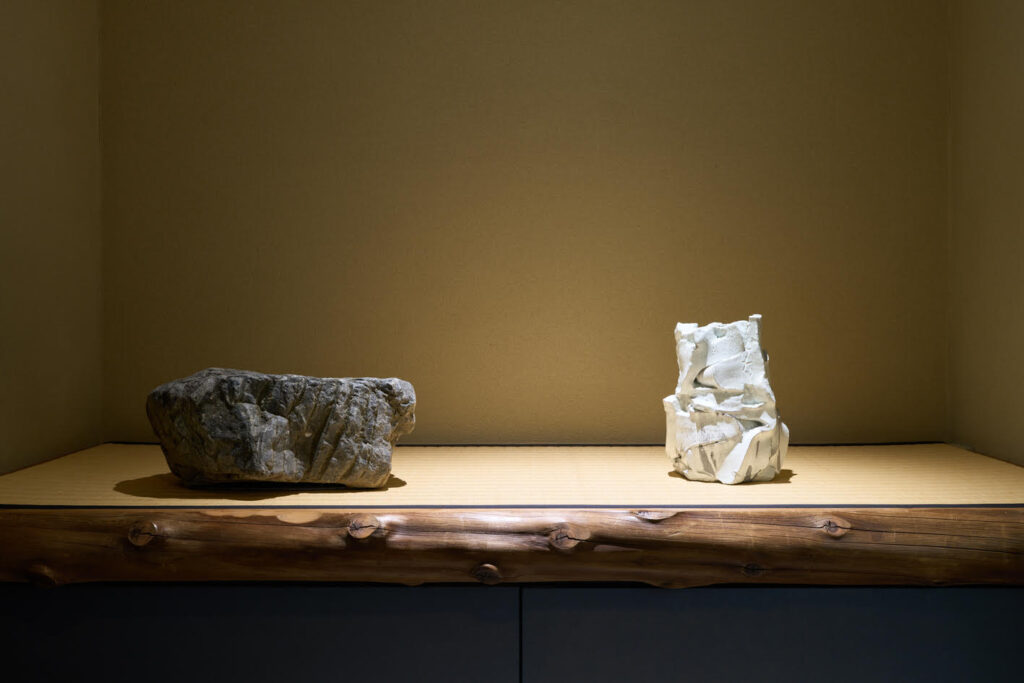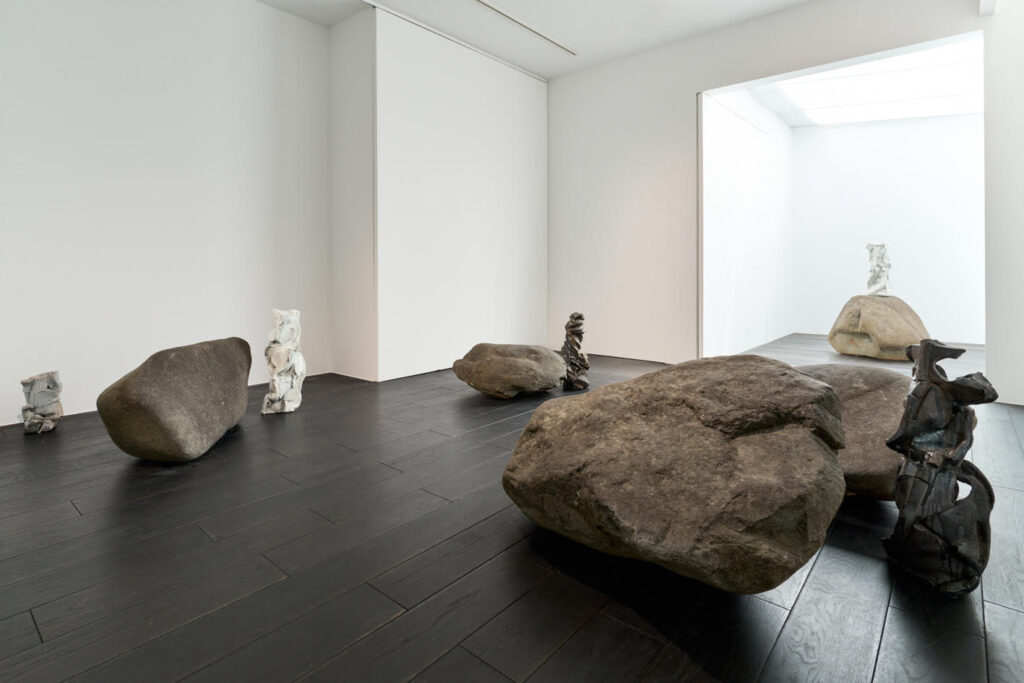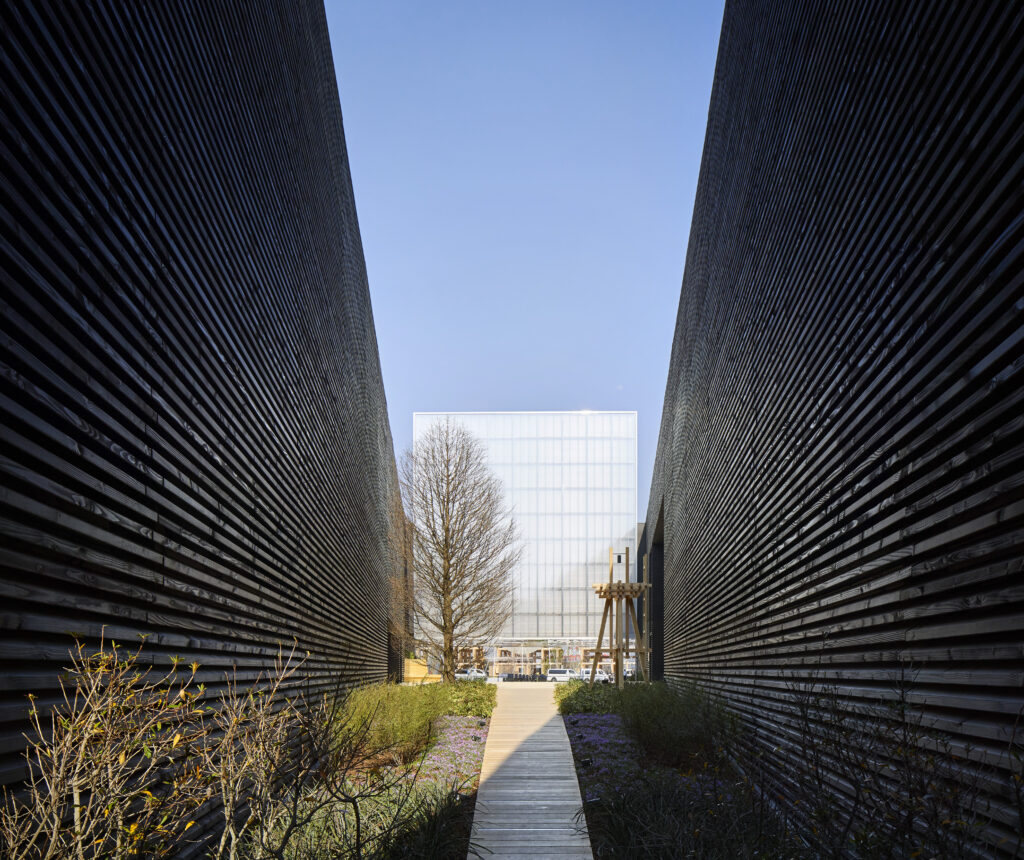
What is in between the ceramic sculptures by renowned Japanese artist Shozo Michikawa (b. 1953) and the US Pavilion—one of the most stand out and popular pavilions at the Expo 2025 Osaka? It is not only that they both contain the element of chance, but the connection is much deeper than that. “Specifically, in the wood cladding and the polycarbonate cladding cube,” the pavilion’s architect Trey Trahan said to me when comparing his pavilion to Shozo’s work, “the wood in its aging and subtle deformation aligns more harmoniously with the natural world, and the polycarbonate panels and their reflections of the LED boards and atmosphere are created by the sun, rain, clouds, and more importantly, all forms of life.”
Shozo made his name in the international art world with abstract clay sculptures that he creates on the wheel in his own innovative method. He belongs to a new generation of craftspeople working in Japan and creating contemporary art using traditional techniques and materials while introducing their own personal innovative methods never seen before. It is his technique of cutting into the exterior or the interior of the clay sulptures while spinning then on the wheel (look below), which allows him to achieve spontaneous, expressive, energetic, and powerful forms. His process reveals a sense of improvisational quality that is surprising and intriguing at the same time. Shozo’s work tends to elicit extreme reactions because of the immense freedom, the sense of fragments and energy, and the contradiction to what we tend to think of Japanese ceramics for its precision and predictability. He is the subject of a solo exhibition titled The Sound of the Mountains being held at the Kyoto-based Sokyo Gallery, with an installation designed by Trahan, containing rocks along newly-createrd clay sculptures. It is the most intriguing show I have seen in Kyoto last week, examining clay art in a new way.
Trahan, a long-time avid collector of Japanese art, has developed the taste and expertise in Japanese culture and crafts. In fact, it is the process of Shozo’s work on the wheel and the element of “chance and unpredictability,” as in Trahan’s words, which has attracted him to the artist whose work has since been included in his renowned collection of Japanese kogei (based in New Orleans). It is the way his technique allows him to represent the volcano and the landscape of Northern Japan, which makes Shozo’s work unique and personal. The exhibition captures two core dialogues: that between the the artist and Trahan, alongside a dialogue between clay and stones, which stand at the core of Shozo’s work. The installation extends an invitation to the viewer to reflect on the way clay emerges from rocks.
Born in the volcanic terrain of Hokkaido where rocks are famously formed, Shozo has been fascinated by stones since his childhood. His memory of collecting stones on the local Mount Sanageyama has become the foundation of his work as a ceramicist and for his spiritual connection to nature. The stone exhibited at the gallery came to capture the nature component along with the artist’s own landscape of Lake Toya and Mount Usu in Hokkaido, where he was born and raised, and taking the viewer on an authentic journey into Shozo’s world.
Entering the natural world through a gallery space has been the goal of numerous recent exhibitions, which I have seen, but has rarely been as successful as here. The stones were arranged in a similar way to Kyoto’s iconic stone garden at Ryōan-ji Temple, connected to the place, while their enormous size and strength brought to mind the spiritual paintings of German Romantic artist Caspar David Friedrich, who conveyed an emotional response to the natural world through his expansive landscapes and enormous rocks. Here is the connection between the ceramic sculptures by Shozo Michikawa and the US Pavilion at the Expo 2025 Osaka.
All images courtesy Sokyo Gallery.
